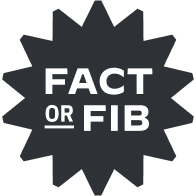| Original photo by mesut zengin/ Stock |
| Popcorn can pop up to 3 feet into the air. | Popping an afternoon snack of popcorn in the microwave generally isn't a messy affair, considering most popcorn cooking is contained to a bag. But if it wasn't, you might have to watch out for flying kernels, since popcorn can pop as high as 3 feet while it transforms from kernel to puff. However, the tiny grains don't just fly straight skyward as they expand; high-speed recordings of popcorn as it cooks show that the kernels actually flip like a high-flying gymnast, thanks to starches that push off a cooking surface and propel the corn into the air.
The way popcorn transforms from a hard nugget to a soft and springy morsel can seem like magic, except scientists say it's really just a trick caused by heat and pressure. Each kernel has three parts: the germ (seed) found deep within the shell, the endosperm (a starch section used to nourish the germ if planted), and the pericarp (aka the hard exterior). Moisture and starch are also packed into each tiny kernel; when heated, that microscopic amount of water creates pressurized steam. By the time a popcorn kernel reaches 350 degrees, the pressure is too much to contain and the pericarp explodes, causing the starchy endosperm to expand outward. When the process is finished, the resulting popcorn has puffed up to 40 times its original size.
While the popcorn industry strives to get 98% popability from each bag of kernels, there's likely still going to be duds at the bottom of the microwave bag. In those cases, it's likely the pericarp was cracked or the kernel didn't have enough internal moisture, both of which prevent any pressure buildup — which means that no amount of extra microwaving will give you a few more bites.
|
|
 | | All corn can be used for popcorn. | | |
|
|
| All corn can be used for popcorn. |  |  |
|
|
|
|
0 Comments:
Post a Comment
<< Home